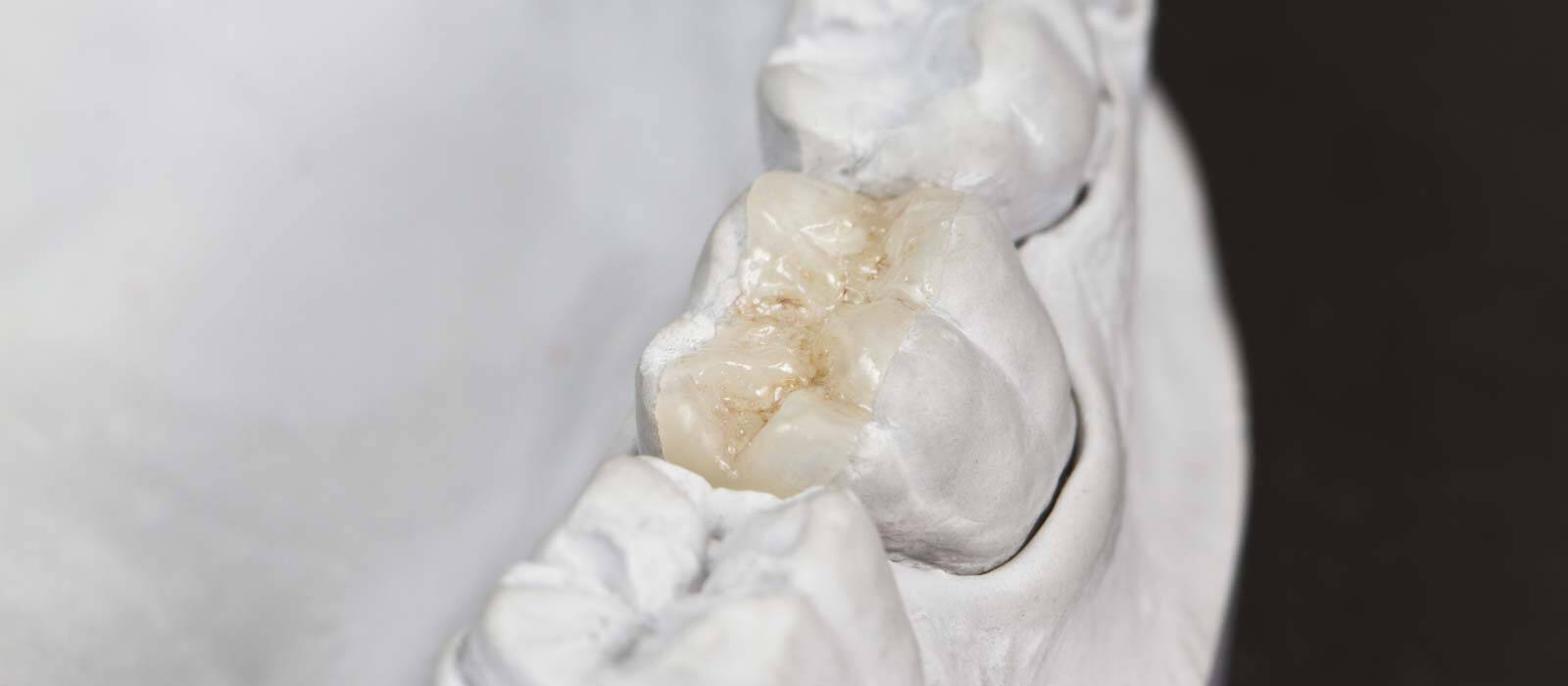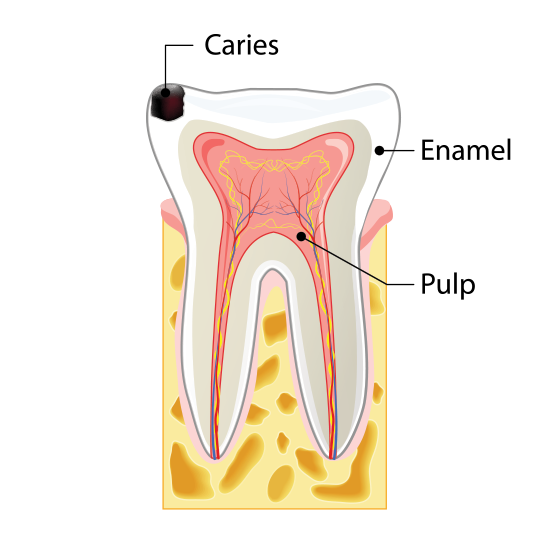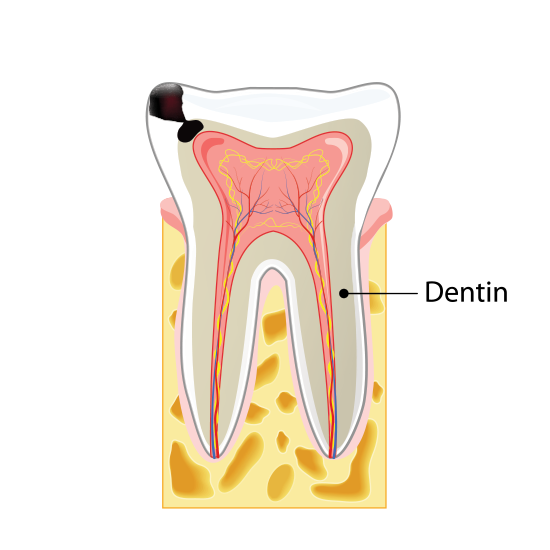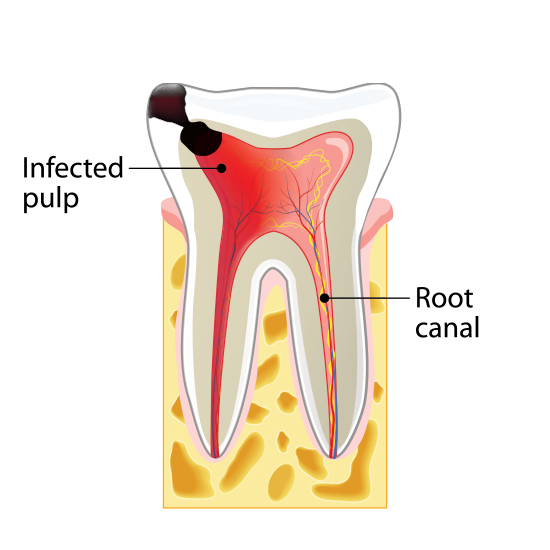Tooth Restoration with Inlays & Onlays
Dental inlays and onlays are restorations used to repair teeth damaged by decay or injury. They are similar to dental fillings but more significant and durable. Inlays and onlays can be made from various materials, including porcelain, gold, or composite resin.
What Is a Dental Inlay?
A dental inlay is a type of restoration used to repair a tooth that has decay or damage within its chewing surface, but where the cusps (the raised edges of the tooth) are still intact. Unlike a regular filling placed directly into the tooth, an inlay is custom-made in a dental lab from porcelain, composite resin, or sometimes gold, and then bonded into place. Inlays fit neatly inside the tooth grooves, providing a precise and durable repair that blends naturally with your smile.
What Is a Dental Onlay?
A dental onlay is similar to an inlay but covers a larger portion of the tooth. Onlays are used when damage or decay extends to one or more of the tooth’s cusps. Sometimes called a “partial crown,” an onlay restores the inner chewing surface and the biting edges, giving the tooth strength and protection. Like inlays, onlays are custom-crafted for a perfect fit and are designed to last many years with proper care.

Your Local Teeth Restoration Dental Professionals
The process of getting dental inlays or onlays

Consultation and Evaluation
Our dental restoration professionals will examine your teeth and discuss your concerns, goals, and treatment options.
We will take X-rays and impressions to ensure precise measurements and a customized onlay that fits perfectly with your existing teeth.

Preparation and Temporary Onlay
Next, a temporary onlay will be placed to protect the prepared tooth while your permanent onlay is fabricated in our dental lab.
The temporary onlay will ensure you can function comfortably until your next appointment.

Placement and Finalization
Our dental restoration professionals at Amazing Smiles pay meticulous attention to detail to ensure a precise fit and natural appearance. We will check your bite and make any necessary adjustments to ensure proper alignment and comfort.
Once everything is in place, your onlay or inlay will be polished to perfection, leaving you with a restored tooth that blends seamlessly with your smile.
Treat Tooth Decay Before It Leads to Tooth Loss
As decay advances, the tooth can become structurally compromised, making it more prone to fractures during normal biting and chewing. It can also affect the gums, potentially leading to gum disease, gum recession, and bone loss, resulting in tooth loss.
Extraction may be necessary in severe cases if the tooth is beyond repair. Regular dental check-ups, good oral hygiene, and prompt decay treatment are crucial to preventing further damage and tooth loss.
Crafting your inlay or onlay
First, the dentist removes decay or damage from the affected tooth.
Next, impressions of the tooth and surrounding area are taken and sent to a dental lab. There, technicians craft the restoration using materials like porcelain, composite resin, or gold, matching the natural tooth’s shape, size, and colour.
Once finished, the patient returns to the dentist for placement. The dentist checks the fit for comfort and bite alignment before bonding the restoration securely to the tooth with dental cement or adhesive.
Why Choose Us for Inlays & Onlays?
By leveraging the skills of experienced technicians, we deliver durable tooth restorations that restore both function and natural appearance.
Treat Tooth Decay Before it Worsens
Stages of Dental Cavity
Dental cavities, also known as tooth decay or dental caries, progress through several stages if left untreated. It’s important to address dental cavities at the earliest stages to prevent further decay and potential complications. If you suspect you have a dental cavity, it’s best to schedule an appointment with your closest dentist for an evaluation and appropriate treatment.
What is the difference between fillings, inlays and onlays?
Fillings, inlays, and onlays are dental restorations that address tooth decay or damage at different levels.
Fillings are the most common type of restoration, used for minor to moderate cavities or small areas of damage. Made from materials like composite resin or amalgam, fillings are placed directly into the cavity and shaped to restore the tooth’s function.
Inlays are used for damage beyond what fillings can fix. Custom-made for each tooth, inlays fit within the tooth’s contours, specifically on the chewing surface and between the cusps. They are created in a lab and bonded to the tooth with dental cement.
Onlays, or partial crowns, are for more extensive damage that affects the chewing surface and one or more cusps. Like inlays, onlays are custom-made but cover a larger tooth area, aiming to replace damaged portions while preserving healthy structure.
In summary, fillings target smaller issues, while inlays and onlays are for larger cavities or damage. The appropriate choice depends on the extent of the decay or damage.
At Amazing Smiles, our dental professionals can evaluate your condition and recommend the best treatment.
Is a dental onlay the same as a dental crown?
A dental onlay and a dental crown are not the same.
A dental onlay is a custom restoration for a tooth with moderate to extensive decay. It covers the chewing surface and cusps but not the entire tooth.
In contrast, a dental crown, or cap, covers the entire visible portion of a tooth above the gum line and is used for extensively damaged or weakened teeth.
In brief, an onlay provides partial coverage while a crown offers full coverage. The choice between them depends on the extent of the tooth damage and the dentist’s evaluation.
What to expect when getting a dental inlay or onlay?
When getting a dental inlay or onlay, here are the key steps:
- Examination and Treatment Planning: Your dentist will examine your tooth, possibly take X-rays, and determine if an inlay or onlay is suitable. They will explain the procedure and address any questions.
- Tooth Preparation: The affected tooth will be prepared by removing decay and shaping it for the restoration. Local anesthesia will be used to ensure your comfort.
- Impression and Temporary Restoration: An impression of the prepared tooth will be taken and sent to a lab for the custom inlay or onlay. In the meantime, a temporary restoration will protect your tooth.
- Final Placement: Once the inlay or onlay is ready, you’ll return for placement. The temporary restoration will be removed, and the tooth will be cleaned. The custom restoration is then bonded securely.
- Bite Adjustment and Polishing: After placement, your dentist will check your bite and make necessary adjustments. The restoration will be polished for a natural finish.
- Oral Care and Maintenance: Regularly maintain good oral hygiene by brushing and flossing, and visit your dentist for check-ups. Avoid complex objects that could damage the restoration.
The Amazing Smiles Dental Team will ensure your comfort and provide post-treatment instructions throughout the process.
How much does an inlay or onlay cost?
The cost of a dental inlay or onlay varies based on several factors:
- Material Used: Different materials like composite resin, porcelain, or gold have different costs.
- Size and Complexity: Larger or more complex restorations require more time and materials, increasing the cost.
- Additional Treatments: If you need procedures like tooth preparation, anesthesia, or extractions, these will affect the overall price.
Our dentists will evaluate your needs during an initial check-up for an accurate cost estimate and treatment plan. Contact our dental clinic for more information or to schedule an appointment.
Can I claim a dental inlay or onlay on private health?
Yes, you can often claim dental or onlays through private health insurance, but coverage varies by plan. Most policies with dental extras may cover these restorative procedures. Check your policy for waiting periods, annual limits, and specific terms.
Contact your insurance provider for information on benefits and out-of-pocket costs. It’s also a good idea to consult our dental clinic; we can clarify treatment costs, help with insurance documentation, and guide you through the claims process.
Are their any risks with dental inlays or onlays?
Inlays and onlays are generally safe dental restorations with a high success rate, but there are some potential risks:
- Allergic reactions: Some people may be allergic to resin or metal alloys. Inform your dentist about any known allergies.
- Tooth sensitivity: After placement, you may experience temporary sensitivity to hot or cold, which usually fades within weeks. In rare cases, it may last longer.
- Discomfort or pain: Mild pain or discomfort can occur post-procedure, typically manageable with over-the-counter pain relievers. Contact your dentist if it persists.
- Damage or fracture: While durable, inlays and onlays can still break under excessive force. To reduce this risk, maintain good oral hygiene and avoid hard objects.
Overall, the risks are low, and complications are uncommon. Your dentist will assess your situation, discuss risks, and take precautions for a successful treatment.
How long does a dental onlay last?
The lifespan of dental onlays and inlays typically ranges from 10 to 30 years, influenced by various factors:
- Material: Common materials include porcelain, composite resin, and gold. Each varies in durability and appearance.
- Oral hygiene: Regular brushing, flossing, and dental check-ups help prevent decay and prolong the restoration’s life.
- Biting forces: Avoiding complex objects and habits like teeth grinding or using teeth as tools can protect the integrity of the restoration.
- Oral habits: Habits such as bruxism or nail-biting can stress restorations. A nightguard may be recommended for bruxism.
- Dental visits: Regular check-ups let dentists monitor the condition of the restoration and address any issues quickly.
Individual experiences may vary, and some restorations might need replacement sooner. Your dentist will evaluate your restoration during routine visits and advise on maintenance or replacement as required.
My filling has broken and fallen out, what do I do?
If your dental inlay or onlay breaks or falls out, take these steps:
- Retrieve the restoration: If it’s completely fallen out, find and handle it carefully to prevent damage.
- Rinse your mouth: Use warm water to gently rinse away debris. Avoid using sharp objects to clean the area.
- Temporary protection: If you can’t see a dentist immediately, use temporary dental cement or over-the-counter adhesive to cover the exposed area.
- Contact your dentist: Schedule an appointment as soon as possible and inform them of your situation and any discomfort.
- Avoid self-repair: Don’t try to fix the inlay or onlay with household materials, as this can cause further damage.
Prompt dental care is essential to address a broken or dislodged restoration. Your dentist will assess the situation and recommend the best course of action.
Is there a warranty on dental inlays or onlays?
Dental inlays and onlays are common tooth restorations, but dentists usually do not offer warranties for them. Here’s why:
- Patient Responsibility: Dentists can’t oversee how patients care for their teeth at home. Oral hygiene, diet, and lifestyle choices greatly affect the lifespan of restorations.
- Individual Variations: Every patient’s oral health and anatomy differ. The success of inlays and onlays relies on the condition of the tooth, the placement accuracy, and the patient’s overall oral health.
- Wear and Tear: Restorations undergo natural wear from chewing, grinding, and clenching. It’s hard to predict how much wear an individual restoration will endure.
- External Factors: Restorations can be affected by factors outside the dentist’s control, such as accidents, trauma, and dental diseases.
Dentists will address patient concerns after receiving an inlay or onlay, but their response is discretionary. Patients must communicate any issues promptly for the best chance at a successful outcome.
We accept all major health funds

Make an Enquiry
We are proud to be preferred providers with most major health funds, allowing our patients to maximise their health cover benefits and access quality care at greater value. To make treatment more accessible, we also offer a variety of flexible payment plans, helping individuals manage the cost of their dental care in a way that best suits their financial situation.
Start your journey toward a healthier, more confident smile by booking your complimentary smile consultation with Amazing Smiles today.




